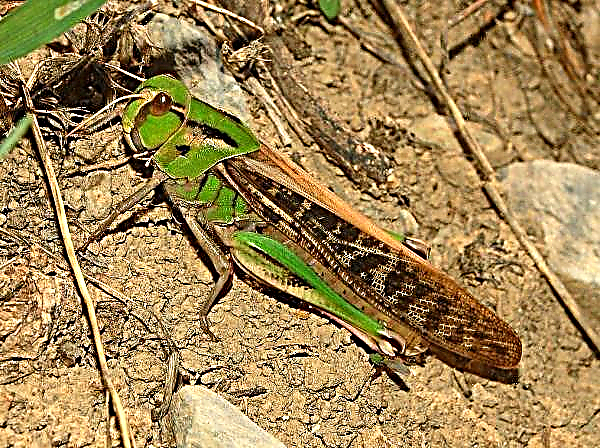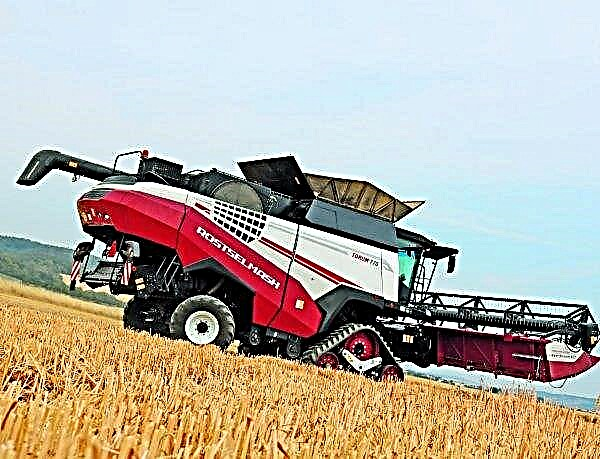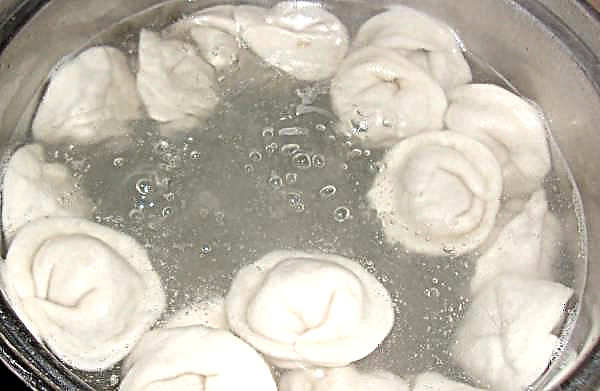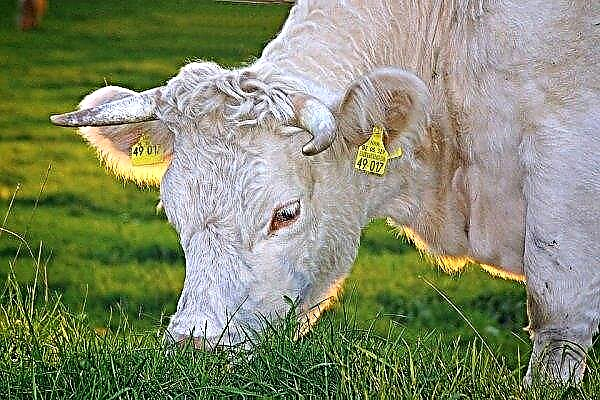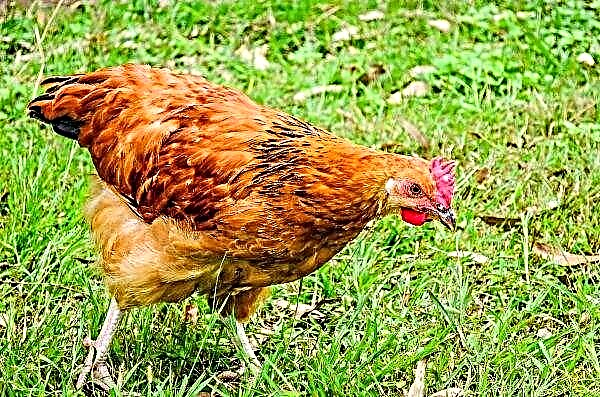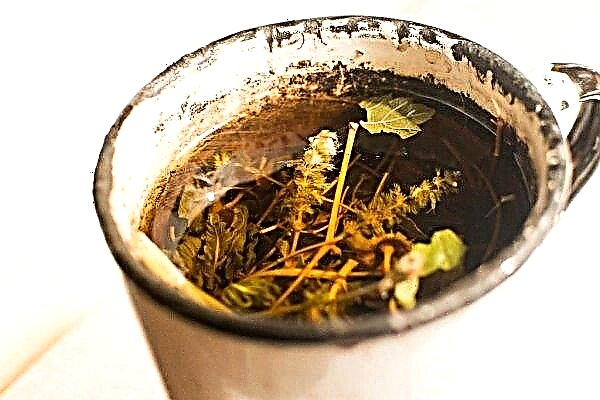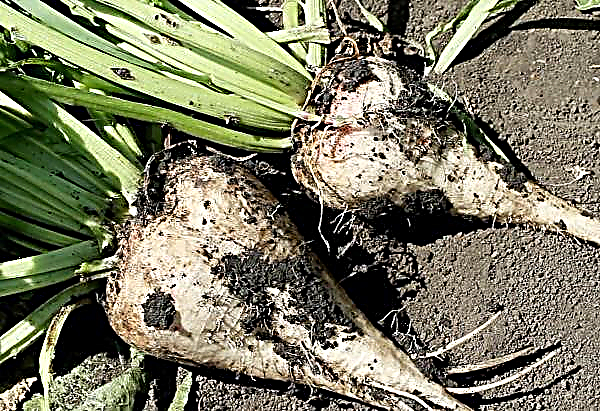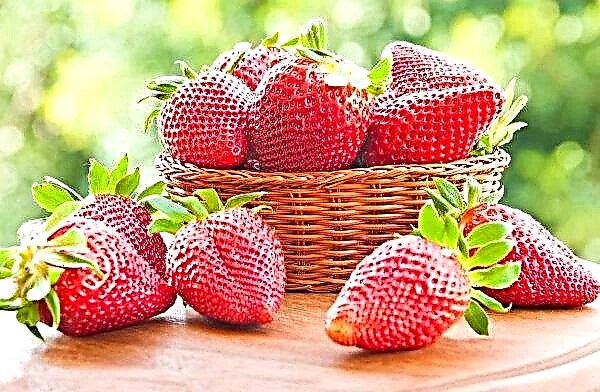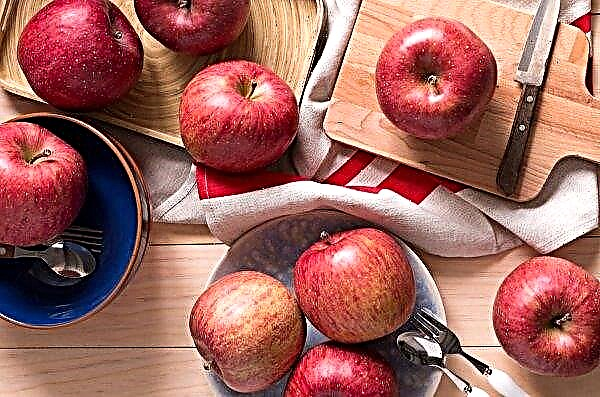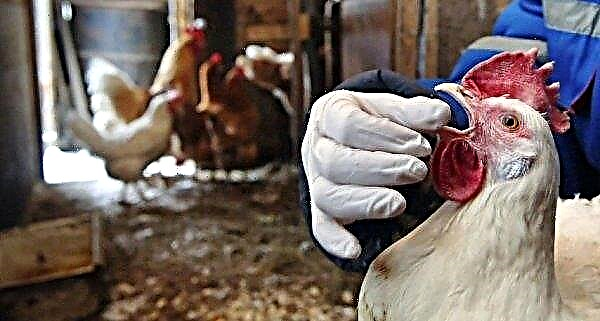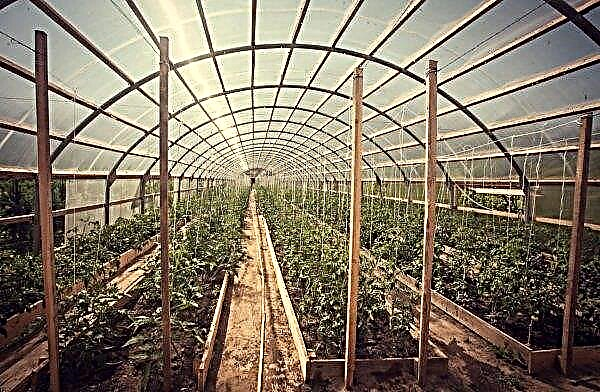Onions are eaten daily, so its cultivation is so popular among gardeners. The characteristic features of the onion variety Hercules and the rules for growing, read below.
Grade description
The Hercules variety is a mid-early hybrid that matures within 2.5 months. A hybrid bred by Holland breeders in order to obtain a disease resistant variety with a long shelf life.
Characterization and yield of onions
General characteristics of the vegetable:
- the bulb has the shape of a slightly elongated ball.
- the juicy part is white, consists of tightly pressed leaves;
- dry part, presented in the form of golden yellow scales located in 4 layers;
- weight reaches 160 g;
- the taste is bittersweet, without excessive pungency.
Important! When planting, it is necessary to observe the row spacing of 20 cm and between the bulbs of 15 cm, which will help to avoid a lack of space for growing vegetables.
Advantages and disadvantages of onions Hercules
- Advantages of the Hercules variety:
- is one of the most used vegetables in cooking, it is added to the first and second courses;
- used as a spice for preservation;
- rich harvest;
- resistance to infectious diseases and pests;
- retains physical and taste qualities for a long time;
- thanks to a well-developed rhizome, resistant to drought;
- does not form an arrow;
- used in cosmetology, in the manufacture of hair masks.
The main minus of the Hercules f1 variety is the inability to propagate by seed.
Planting and caring for onions
For planting the Hercules cultivar, seeds are used - small onions 2-3 cm in diameter, which are purchased in a specialized store or grown independently. Planting material must be dry, it is not allowed to plant rotten or damaged seed. Before planting, the selected seed must undergo treatment, for which a solution of Nitrofoski 20 g per 10 l of water is used, in which the seeds are soaked for 8 hours. Then planting material is dried and planted in the soil.
Landing time
Landing is done with the onset of stable, spring heat. The landing date directly depends on weather conditions and air temperature, which should warm up to +15 ... + 20 ° С. The period from late April to mid-May is great.
Important! Watering should be carried out in the evening, when the sun is less active.
Preparation of beds
Preparation for planting should take place in advance, it is imperative to fertilize the soil before planting onions. It is necessary to prepare the mixture, based on 1 m²:
- peat: 4 kg;
- rotted manure: 5 kg;
- superphosphate: 30 g;
- urea: 10 g.

Planting onions
Step-by-step landing:
- Sapa, make a depression in the soil by 5 cm.
- Introduce prepared onions into the hole, slightly pressing them into the ground.
- Cover the holes with earth and water.
- Mulch the beds with sawdust.
Care Features
Onion watering should be moderate; in dry weather, irrigation of beds is done every 3-4 days. For irrigation, it is better to use rainwater or water that has been standing for several days. It is necessary to regularly cultivate the soil near the beds. The weeding process is carried out after rains and watering. Loosen the soil carefully so as not to damage the fragile rhizome.
Did you know? The sugar content in onions is 6%, so when roasted, it becomes sweet in taste.
To obtain a high-quality crop, it is necessary to fertilize the soil 2 times a season. Nitrogen fertilizers are used in the spring to promote the rapid growth and development of the plant, using 20 g of urea per 10 liters of water. In the middle of summer, organic feeding in liquid form is made in the form of 2.5 kg of manure diluted in 10 liters of water.
Prevention of diseases and pests:
- change the place of landing annually;
- making moderate watering will avoid problems with rotting rhizomes from excess moisture;
- mandatory processing of seed.

Features of landing under the winter
Winter varieties are planted taking into account the climatic characteristics of the region. Most often, winter onions are planted in late October or early November. Acceptable temperature for planting from 0 ° C to -5 ° C. It is not necessary to plant winter onions too early, otherwise, under the influence of heat, it will have time to take root and grow, which will lead to its death in winter. The technology for planting onions in autumn is the same as in spring. Preparation for the winter period consists in carefully sheltering the beds during the period of frost.
For shelter use:
- straw;
- sawdust;
- thick cardboard;
- tree branches.

Harvesting and storage
Rapid and deep rooting contributes to a better absorption of nutrients from the soil by the bulb, which contributes to high yields. Harvesting begins in late August, when the onion feathers dry out and the scales on the neck form a tight joint that will protect the vegetable from moisture and prevent infection. It is necessary to have time to harvest before the onset of cold weather.
Using a pitchfork, the bulbs are dug out of the soil and left to dry in the open air for 2 days. Bulbs should be cut from feathers, and then placed in a dry, cool room. Be sure to store the vegetable must be well ventilated to avoid the formation of mold. Optimum storage temperature of onions + 20 ° С. Vegetables are stored in wooden crates or baskets, and bow ties with onions are suspended from the ceiling.
Possible problems
Nutrient deficiencies can cause yellowing of onion feathers. In the fight against the problem will help the annual change of the vegetable landing site, as well as timely fertilizer of the soil. For fertilizer, you need 10 l of water, dilute 300 g of chicken droppings and 20 g of urea, use fertilizer in the amount of 3 l per m². Yellowing of the aerial part of the bulb may also indicate the presence of harmful insects, in the fight against which planting near with onion beds of tansy or marigold will help. So that the future crop is not bitter, it is necessary to regularly loosen the soil in the beds, saturating the rhizome with oxygen.
Yellowing of the aerial part of the bulb may also indicate the presence of harmful insects, in the fight against which planting near with onion beds of tansy or marigold will help. So that the future crop is not bitter, it is necessary to regularly loosen the soil in the beds, saturating the rhizome with oxygen.
Growing recommendations
Recommendations for growing and caring for onions:
- When dealing with onion flies, table salt sprinkled between rows will help.
- Onions are best stored in paper packaging.
- During storage, it is necessary to regularly sort the onions, discarding spoiled and rotten onions, which will prevent damage to the entire crop.
- Plant onions must be in the soil with a neutral indicator of acidity.

